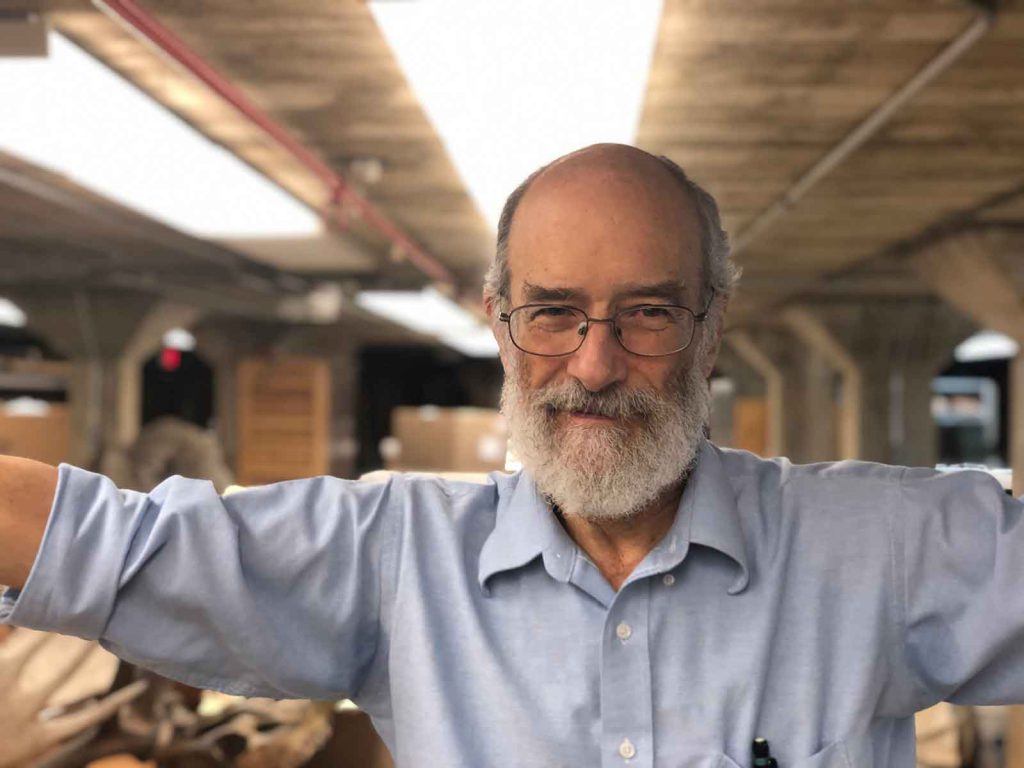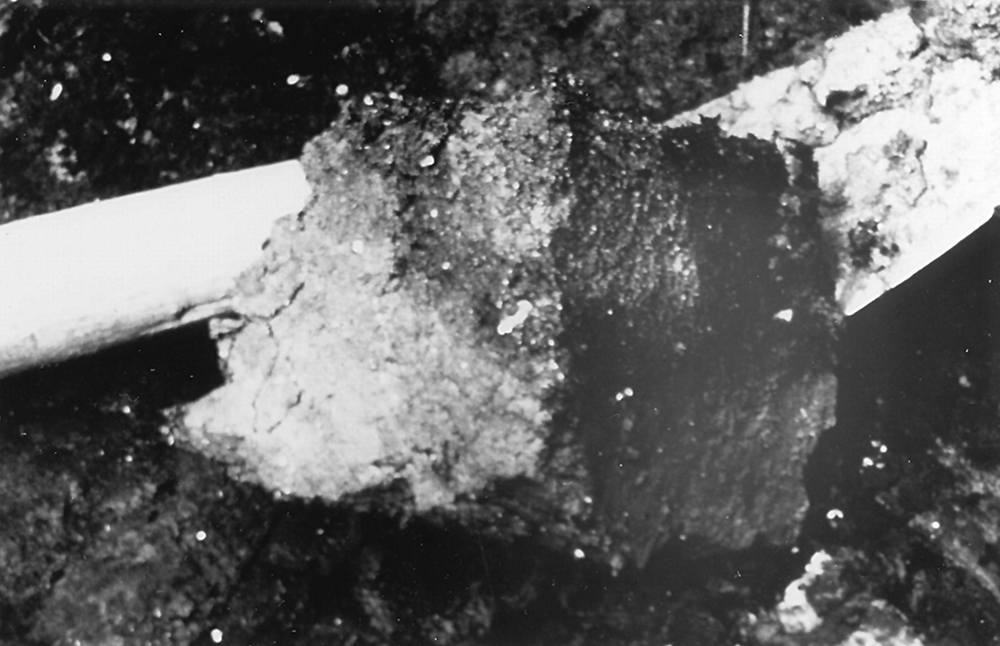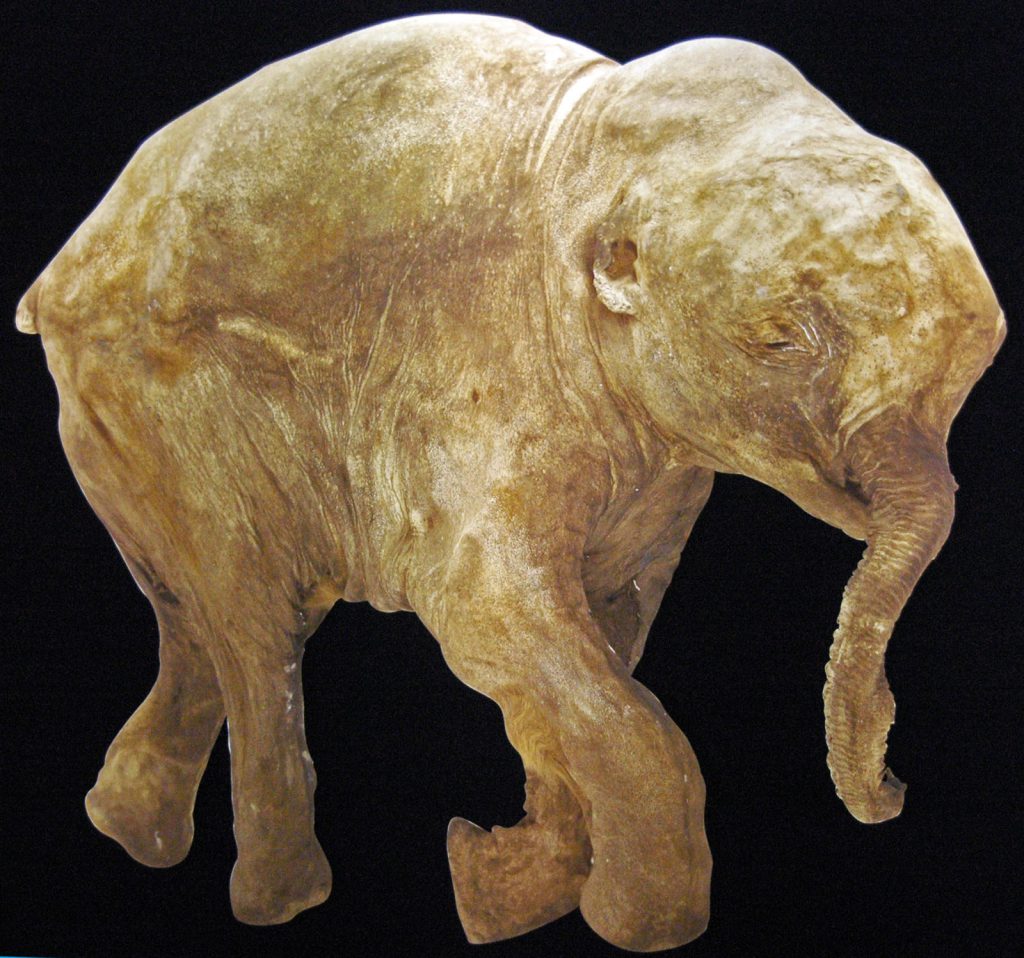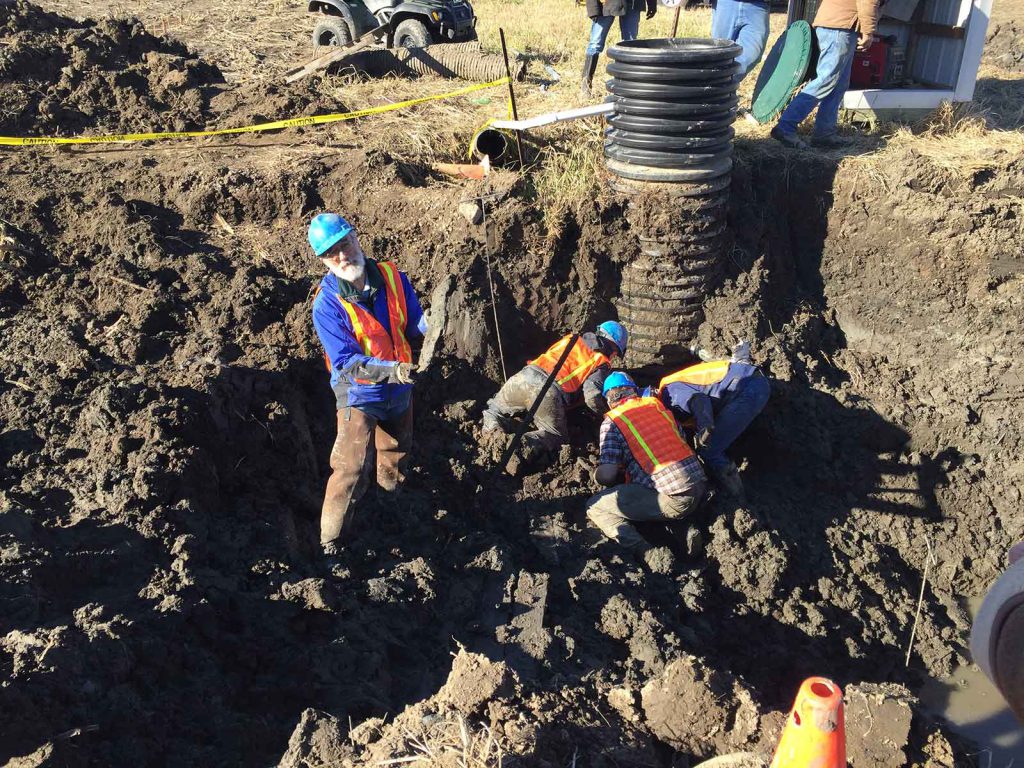Could Mammoth Bones Reveal When Humans First Arrived in North America?
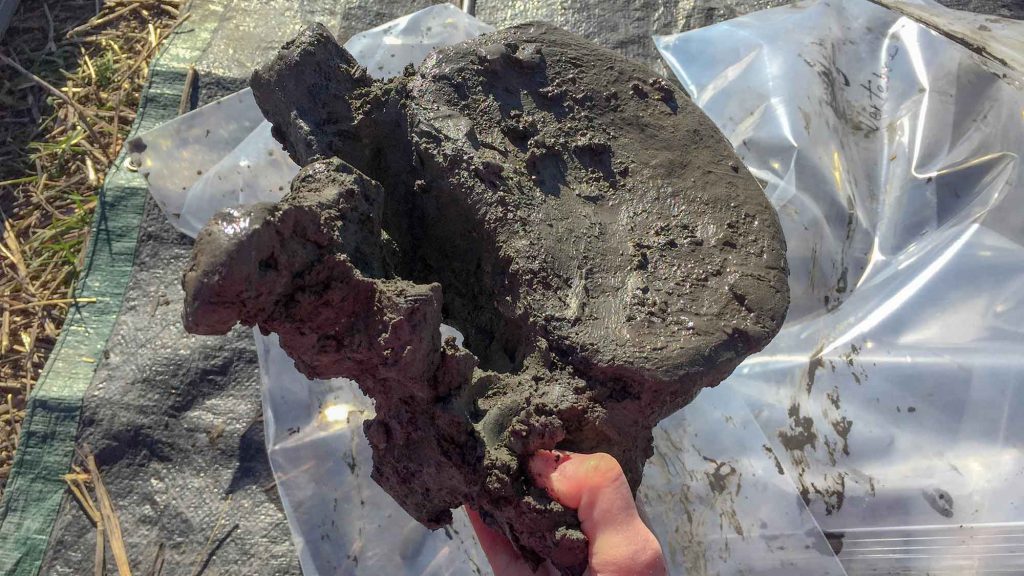
The horsemeat had a slightly cheesy flavor when Dan Fisher, a paleontologist at the University of Michigan, put it in his mouth. Every two weeks for the preceding six months, Fisher had pulled the carcass up from the bottom of a pond and cut off a hunk of flesh. His aim was to see how long it would keep in the cool waters. The tangy taste was the first sign of decay.
Half a year earlier, in February of 1993, fellow University of Michigan paleontologists Catherine Badgley and her husband Jerry Smith had found the draft horse dead on their farm. She, Smith, and Fisher skinned and butchered the animal, then sank parts of the horse in a shallow pond on the property. It kept for longer than anyone had expected. Surprised by the length of time the meat lasted, even Badgley, a vegetarian, tasted it.
The finding helped support a theory that Fisher had wanted to test: Humans may have used small ponds that dotted the Great Lakes region during the end of the Pleistocene epoch, some 10,000 years ago, as refrigerators. The water bodies formed across the landscape as glaciers receded, and Fisher reasoned that they offered storage for dead mastodons and woolly mammoths.
What Fisher saw happen to the meat is “very strong circumstantial evidence” for the idea that humans used ponds to cache their food, says Badgley. And that’s just one of the unconventional experiments Fisher has employed over his more than 40-year career.
The study of humanity is a diverse domain. To answer questions such as when people first came to the Americas and how they may have contributed to the demise of woolly mammoths and mastodons, anthropologists ally with experts in fields such as genetics and geology.
“Interdisciplinary teams are the best because you’re bringing in so many different perspectives,” says Michael Waters, an archaeologist at Texas A&M University who has collaborated with Fisher. Such partnerships, he adds, are the future.
Fisher has been blending disciplinary approaches throughout his career to add to knowledge about humankind and human history. He has a library of data, shelves upon shelves of ancient animal bones, molds and casts, and decades of experience studying the marks made on remains. He’s well-respected both by other paleontologists and by experts in other fields, such as anthropology, and is largely considered the leading expert on mammoths and mastodons.
Fisher’s known for pushing the envelope with his methods, but lately, his work has gone further still. He contributed to one of the most controversial papers to date on evidence indicating the presence of humans in the Americas, and he’s offered support for one of the main hypotheses on what caused the extinction of mammoths and mastodons, contributing to debates rippling through the field of anthropology.
Dan Fisher was just 15 years old when he joined his first international archaeological dig. His father, Loren Fisher, a professor of Semitic languages at Claremont Graduate University in California, traveled to Syria in the early 1960s with Dan to investigate clay tablets found in the ancient city of Ugarit. (They traveled by passenger ship to Europe, took a train to Belgium, purchased a Volkswagen van, and drove to their destination.) Shortly after they arrived, however, the scholar had to leave, but Dan Fisher stayed on. For the next four months, living mostly with Arab workmen at the site, Dan participated in the dig.
Inspired by early experiences investigating the natural world and human history, Fisher received his undergraduate degree and Ph.D. in geological sciences at Harvard University, where he studied horseshoe crabs. He went on to work at the University of Michigan’s Department of Geological Sciences and Museum of Paleontology. He began his career examining primitive echinoderms, predecessors to sea urchins, diving into work on their behavior and ecology. But when Fisher’s attention turned to mammoth and mastodon bones, he decided the other stuff could wait. He wanted to understand how these massive animals died and how their remains had been preserved over millennia.
Thus began a string of novel studies to help answer questions that pull at paleontologists’ and archaeologists’ minds alike. Paleontologists often conduct experiments to see how an environment may have affected fossils—floating bones down a river, for example. Fisher employed the tools he had.
In addition to sinking animal bodies in ponds, Fisher tested tools and methods he thought early people of the Americas may have used. When the Toledo Zoo in Ohio needed to exhume an elephant carcass in 1994 and called Fisher, he took the body back to Michigan. There, he butchered the animal using a stone knife that he fashioned himself, as well as ropes and tree branches to move the weighty body parts. Humans in the region could have used similar tools thousands of years ago. He found that one man (in this case, himself) needed three days to butcher an elephant. And he now had evidence of the markings such tools make on the bones.
But Fisher still had plenty of questions. If humans sank meat in water to protect it from scavengers, what did they do when ice covered the pond’s surface? How could early inhabitants melt it? Fisher used his children’s kiddie pool to find an answer. He put rocks on ice that formed in the water-filled plastic pool sitting in his backyard, observing the time it took for them to melt through. At more than one site, Fisher has found large rocks among the bones, which he believes could have been used to thaw the ice so people could reach meat caches below.
Then there’s the question of how people kept the meat from floating ashore, safeguarding it from scavenging animals such as wolves and bears. During the excavation of a mastodon site in Michigan, he and his colleagues found masses of sand and gravel that appeared to have been placed on the bottom of the ancient pond. He hypothesized that people could have loaded the intestines with the material to make anchors tethered to the meat, keeping it firmly secured in the pond.
“Who comes up with that? And it’s right!” says his former graduate student David Fox, now a paleontologist at the University of Minnesota. “Dan is an incredibly deep and careful thinker, and thoughtful scientist.”
Fisher’s methods and conclusions are not equally persuasive to everyone, however. Brad Lepper, an archaeologist at the Ohio History Connection, a statewide history organization, describes how challenging it was for him to accept Fisher’s argument that humans cached meat at the Burning Tree mastodon site in what is today Ohio. “I was dragged kicking and screaming to this interpretation,” he says. Once convinced, Lepper and Fisher published on the find in 1991 and again in 1994, and in 2006, Lepper wrote about the site in the Ohio History Connection’s Timeline magazine.
Ultimately, the markings (gouges and incisions) found on bones from parts of the body anatomically unrelated to each other, concentrated in three different places at the site, helped provide overwhelming evidence that Fisher’s evaluation was correct. “It’s like a crime scene: Do you know a human did that? And I think Dan has made a very compelling argument for why human involvement at sites like the Burning Tree mastodon site is the best explanation,” accounting for why the mastodon was found the way it was, and the bones that bore certain hallmarks were arranged as they were, Lepper says.
For 20 years, Fisher has also traveled to Siberia to study mammoth remains. There, he analyzed a nearly intact 40,000-year-old baby mammoth carcass that a reindeer herder found. When Fisher and a team of scientists examined it in 2007, the frozen body was the most complete mammoth ever found.
He was the first to discover that mammoth and mastodon tusks contain a record of daily growth. When viewed up close, tiny rings show the record of an animal’s life history: how fast it grew, when it was weaned, and when it reproduced. In good times, calves are weaned earlier, Fisher has found. Mammoths in North America went extinct approximately 11,000 years ago. Their tusks reveal that, at that time, the animals were experiencing higher growth rates. This finding informs his ideas about how the giants met their ultimate demise, one of the great mysteries in both anthropology and paleontology.
On a cold November day in 2017, Fisher walked carefully in his neoprene waders to the side of a growing hole in the ground, pulling one booted leg from the sucking mud before squishing into the ooze with the other. Fisher was on farmland, now called Mammoth Acres, near his academic home at the University of Michigan in Ann Arbor.
Two years prior, farmer Jim Bristle dug a drainage ditch on his property and unearthed what turned out to be mammoth bones. Bristle stopped his work, found Fisher’s number, and gave him a call. Fisher excavated the next day, uncovering a partial mammoth skeleton. The team found approximately 60 nearly complete mammoth bones that accounted for up to 40 percent of the skeletal mass of one animal.
On this visit, his second trip to the farm, Fisher carefully pulled soil plugs from the wall of the small pit. The samples would help confirm when the mammoth died, and pollen would help identify the plants nearby at the time, helping to reconstruct the environment in which the mammoth lived. On the second day of digging, the team uncovered several of the mammoth’s vertebrae, part of a scapula, and a number of other bone fragments.
Early residents may have stashed this dead mammoth, and based on the time of year it expired, Fisher suspects the creature died fighting another male. The animal may have been butchered nearby, but no stone tools—evidence that archaeologists consider the gold standard for linking humans to a place—turned up.
Fisher casts a wider net. “Humans did other things than make flaked stone tools,” he says. “They didn’t necessarily leave one as a calling card wherever they were active and doing stuff. Let’s consider these other kinds of evidence, which may, if only we can understand them well enough, be just as compelling in the end.”
For example, back at the University of Michigan’s Museum of Paleontology, where this mammoth skeleton now sits, Fisher points out a hole in the skull. Humans could have punched through the bone to access the mammoth’s brain, which contained essential nutrients for growing children and pregnant women. Damage to the pulp cavities of both tusks shows how people may have targeted those areas too. Broken bone where the trunk attached to the mammoth’s face provides more processing evidence, Fisher argues, as do bone fractures that hadn’t healed.
These patterns exist on many skeletons, says Fisher, and could help substantiate claims made in two major debates roiling among archaeologists, paleontologists, and other scholars who study the history of the American continents. First, when did humans come to these lands? And did they precipitate the demise of mammoths and mastodons?
Up until the 1970s, the established wisdom held that the peopling of the Americas began roughly 13,000 years ago, but mounting evidence has pushed that date further back. Many conventional estimates suggest people made their way onto the North American continent about 16,000 years ago. In Michigan alone, Fisher and other researchers have uncovered bones from more than 30 mammoths and 300 mastodons. The bones and tusks, some of which show evidence of human processing, suggest that humans existed in the region now known as the Midwest as far back as 15,000 years ago. But some scientists—including Fisher—suspect the timeline goes back even further.
In 2017, anthropologists at the University of Montreal presented evidence for humans living in the Yukon 24,000 years ago. And in perhaps the most controversial claim yet, published that same year in Nature, Fisher and a cast of scientists from various disciplines concluded that humans may have butchered a mastodon 130,000 years ago at what they call the Cerutti site near what is now San Diego, California. Many anthropologists questioned the findings, arguing in scientific journals about the validity of the paper’s conclusions.
“Things are more open and in a process of discovery than they’ve ever been, but we still are constrained by standards of evidence, and that site just doesn’t meet it,” says Todd Braje, the Irvine Chair of Anthropology and an associate curator at the California Academy of Sciences, who, with nine other scholars, wrote a response in the journal PaleoAmerica. Nature can cause the fractures seen on the bones, and the timeline itself doesn’t fit with what we know about human navigation, he says. Humans, or their ancestors, weren’t sophisticated mariners until roughly 50,000 years ago, 80,000 years after the Cerutti team claims people existed at the site.
Fisher’s work has also supported the hypothesis that when humans began to thrive on the continent, they played a role in the mammoth and mastodon extinctions. Researchers debate whether mammoths and mastodons died out primarily because of changes in climatic conditions or from human hunting. Fisher bets on the latter. Humans didn’t necessarily kill every last one of the mammals, though. Simulations show that when predators have more than one food source, they can drive a prey species to extinction. And large animals that take a long time to reproduce are especially vulnerable. “Some consequences may take generations to play out, some may take centuries,” says Fisher.
He could be wrong in how he interprets mammoth and mastodon fossil evidence, and the Nature paper certainly casts doubt on what bone features can be associated with human activity. (Braje wasn’t the only one who published negative commentary; Gary Haynes, emeritus professor of anthropology at the University of Nevada, Reno, wrote that the paper’s claims were “based on an argument from ignorance.”) Without stone tools to put humans in a place, dating when they came to the continent—or to a particular site—is problematic, argue many anthropologists.
If no stone tools ever surface at what Fisher suspects is a cache site, “I think there will always be some questions in the minds of archaeologists,” Lepper says. Unlike the Burning Tree location, Lepper remains skeptical of the Cerutti site’s evidence. He doesn’t think the idea is outrageous, but he’s not yet convinced that humans were there.
Other archaeologists agree. “I understand why he makes [his conclusions], I just disagree with them,” says Todd Surovell, an archaeologist at the University of Wyoming, of Fisher’s work on when humans arrived in the Americas. “I think probably the big difference is what we’re willing to accept is clear evidence of the presence of humans.”
But that disagreement is fine, adds Surovell, because it generates research. “What matters is that we’re pushing science forward,” he says.
For his part, Fisher states that if the evidence he collects from mammoth and mastodon remains points to other explanations, he’s open to hearing about it. Until then, however, he plans to keep publishing and analyzing his data.
“In many cases, the standard view is not good enough, it’s not well-founded enough. It needs to be kicked and prodded, and we need to see whether it’s legit,” says Fisher. And if he’s right about the early human presence in the Americas, his findings—and what researchers uncover next—could reveal the sweeping influence of humans on the landscape, both then and now.
Correction: May 20, 2019
An earlier version of this article stated that Todd Braje is a professor of anthropology at San Diego State University. He is the Irvine Chair of Anthropology and an associate curator at the California Academy of Sciences.

































